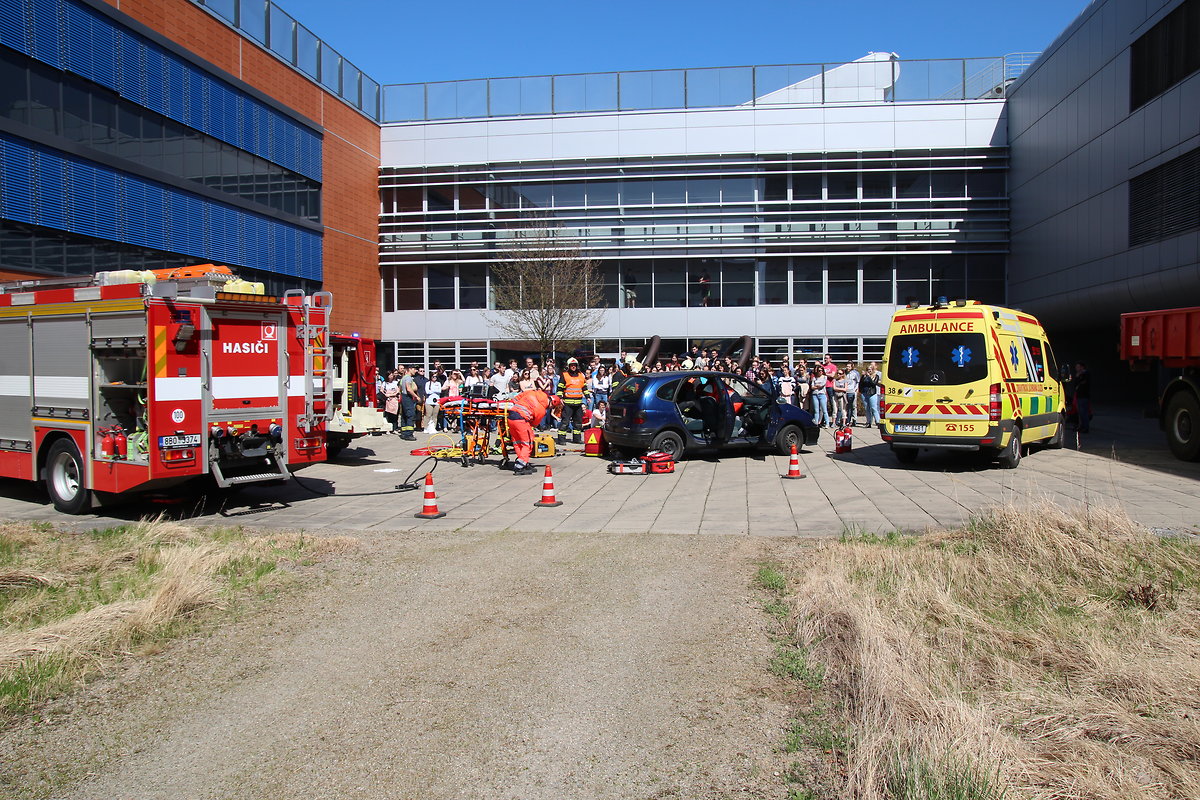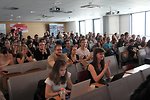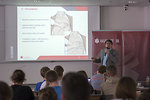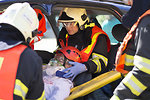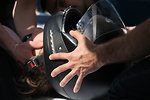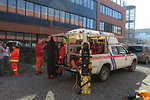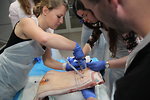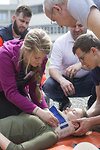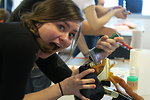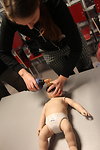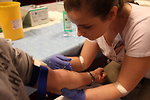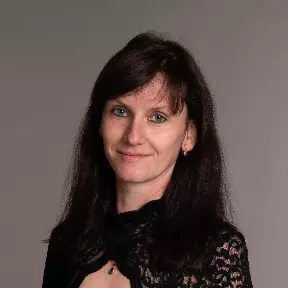Yes, even this kind of rescue simulation was offered from emergency physicians to young and enthusiastic medical students who had decided to spent their time in the University Campus as participants of the Course. Its first day was fully dedicated to deepen student´s knowledge in the field of the basic and also advanced life support. In five subsequent blocks students could learn how important is the right depth and frequency of chest compression when providing CPR or that chest compression should not be stopped for more than 5 seconds. As advanced supporters we should think about eight potentially reversible causes of cardiac arrest: Hypoxia, Hypovolemia, Hydromineral imbalance, Hypothermia, Tension pneumothorax, Tamponade, Thrombosis and InToxication. All eight causes could be easily remembered as 4H and 4T rules. A good advice for rescuing a new-born is the possibility of administrating drugs directly into umbilical vessels. Another lecture guided students through the right techniques of airway management. In obstetrics lecture a particular attention was given to ectopic pregnancy. A patient with this complication very often refuses to lie on back because of perihepatic bleeding. Another important point to be recognized while dealing with pregnant patient is a pressure in the rectal area which stands for the shortly upcoming delivery and thus the transport to the hospital should be avoided. The first day of the Course finished in the late afternoon and all participants were by the end already very impatient to attend the practical workshops prepared for Sunday.
After mainly theoretical Saturday, Sunday offered our participants the chance to put all their knowledge to use. From 8 a.m. to 6 p.m. with very little time to rest in between the day promised to be exhausting but also exciting, full of new experiences and information. Sunday bloody sunday, right? Especially when you are trying to puncture each other veins and insert an IV line. That also explains the raising number of students with bandaids on their arms throughout the day. What would you do if you witnessed a woman going into labour with no chance to get her to hospital in time? Don’t panic, calm her down, instruct her to breath and when she feels pressure similar to one during defecation tell her to push and protect the perineum with your hand. Famous difficult airway management stand taught eager students different ways to secure airways - jaw thrust, face mask, laryngeal mask or the golden standard - intubation. Meanwhile, medical team of three were called to a situation - 26 year old woman collapsed, one week after knee operation. Points for medical history, clinical examination, soft skills and differential diagnosis determined the winner. Reinforcement of knowledge and skills is the key to good clinical practice. That’s why you have to practice even more for situations that don’t happen very often but can jeopardize patient’s life. Basic life support can be given by anyone anytime when adult or child has stopped breathing. Advanced life support (ALS) is reserved for medical professionals with equipment. At ALS stand students role-played medical emergency team called to a cardiac arrest. Children are not small adults, they always tell you at pediatrics and the same goes for CPR. Begin with five initial breaths, massage for 1 minute then call forr help, if you are alone. Tension pneumothorax is one of the reversible causes of cardiac arrest, so of course part of the skills included learning how to insert a chest tube without puncturing the ballon or, if you want, the lung. Weather outside was amazing but our students had to deal with floods. There was a mass-casualty incident in progress and they had to manage patients running away from tent and coming in at numbers exceeding their own. Most important thing in car crash? Mind your own safety! Secure the site, go round the car and look for people who might have been thrown out. Paramedics brought their vehicle and showed our students how to immobilize a patient, put on a stiff neck or traction device. Day came to an end, but not before the official ending where we found out which team won the challenge and who got in the traditional Hall of fame. We hope the participants enjoyed this weekend at least as much as we, the organizers, did. See you next year!
